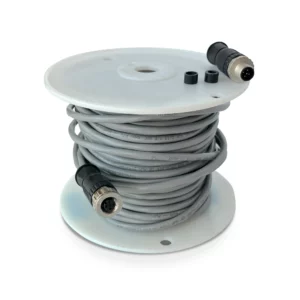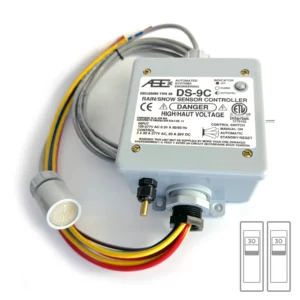Protect your Heat Tape from sharp edges of sheet metal, screws, nails and more with Cable Guard. Designed to quickly snap onto any heat tape cable that is 5-6mm thick by 8-13mm wide. Requires no tools to install. Can be cut to length for specific uses.
$13.95
161 in stock

Cable Guard is a UV-resistant flexible PVC extrusion with an inner aluminum core designed to quickly snap onto any cable that is 5-6mm thick by 8-13mm wide. It provides protection against many common forms of damage including cuts, punctures and abrasions. It is simple to install and remove and requires no tools. Cable Guard can be cut with a standard tin snips if needed. Common applications include using Cable Guard to protect cable as it makes its transition into the gutter downspout, where cable is exposed on the bottom of the downspout system, where cable comes into contact with any sharp edge and where cable passes through sheet metal, such as through Leaf Guard, Gutter Helmet and other metal gutter screens.
“Heat Tape Pro did exactly what I needed it to do. Now I don’t have to worry about water leaking into my house, because I can tell when it’s working by the little light on the end of the cable.”
-Michael P.
Amazon Customer
“This heat tape works as advertised. It was delivered to me fast, and although it’s a little complicated to install, the documentation is good..”
-Shaun D.
Radiant Solutions Customer
“I install thousands of feet of heat tape every year. This is the best stuff I’ve found to protect my customers homes and give them the piece of mind they need.”
-Patrick B.
Professional Installer
Radiant Solutions has the most comprehensive installation system for Heat Tape that exists. We make accessories to install heat tape on almost any kind of roof.
Click here to learn about product specifically for Natural Cedar Roofs
The short answer is NO. Self-regulating heat cable does not turn itself on and off automatically. To do that you need to put the cable on a switched circuit or outlet or on a controller. Of course, you can also be old-school about it and simply plug and unplug as needed.
“Self-Regulating” refers to the fact that these cables are temperature sensitive. Due to their construction, these cables sense changes in temperature along their entire length, demanding more power as temps fall and less when they rise.
PipeFreeeze Pro™, Pipe Freeze Protection Solution has a built in thermostatic switch, meaning it will turn on and off on it’s own.
Heat Tape Pro™, does not contain a built-in thermostatic controller. We recommend adding the ThermaCord™ Thermostatic controller to turn your Heat Tape PRO to turn the cable on and off with changes in temperature.
If you are in need of a specific product that is currently out of stock, you can request to be notified when new inventory of product is in stock.
Click Here to complete the Re-stock Notification Form
We generally do not reserve stock for miscellaneous reasons outside our stated inventory on this website. Besides selling on this website, we also Sell our products on Amazon.com – in doing so, we send separate inventories to their warehouse for fulfillment, so you could check inventory of the product you are looking for there.
Radiant solutions has developed several accessories and installation components that work well for flat and low-pitch roofs. Installing heat tape on a flat roof often requires more unique considerations than standard serpentine patterns used on pitched roofs.
Check out our Case Studies for examples of Heat Tape installations, including information on flat roofs.
Also refer to the Heat Tape Pro Product Manual for information on flat roof installations of heat tape.
Check out our full list of Frequently Asked Questions on our FAQ Page.
Take a Look at Our Heat Tape Installation Case Studies
Learn a Bit about Ice Dams and How & Why they Form




